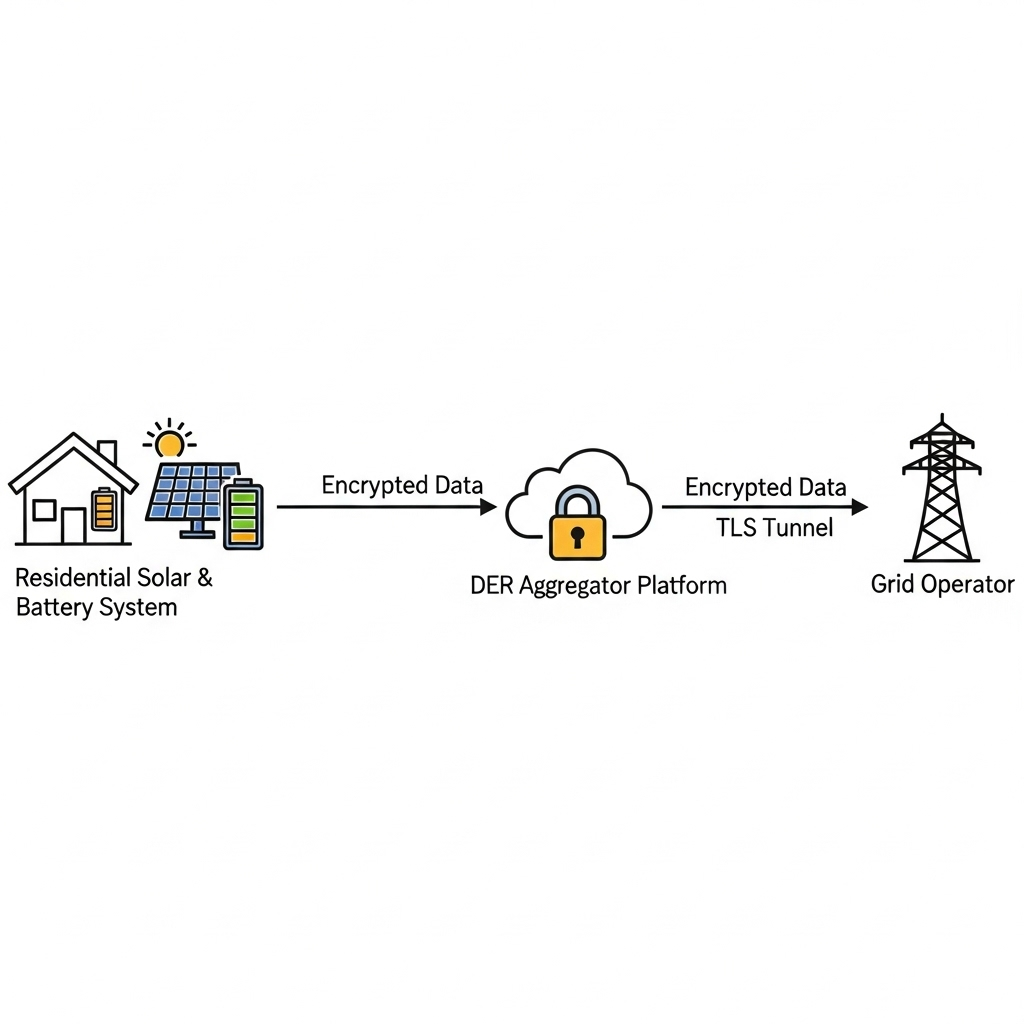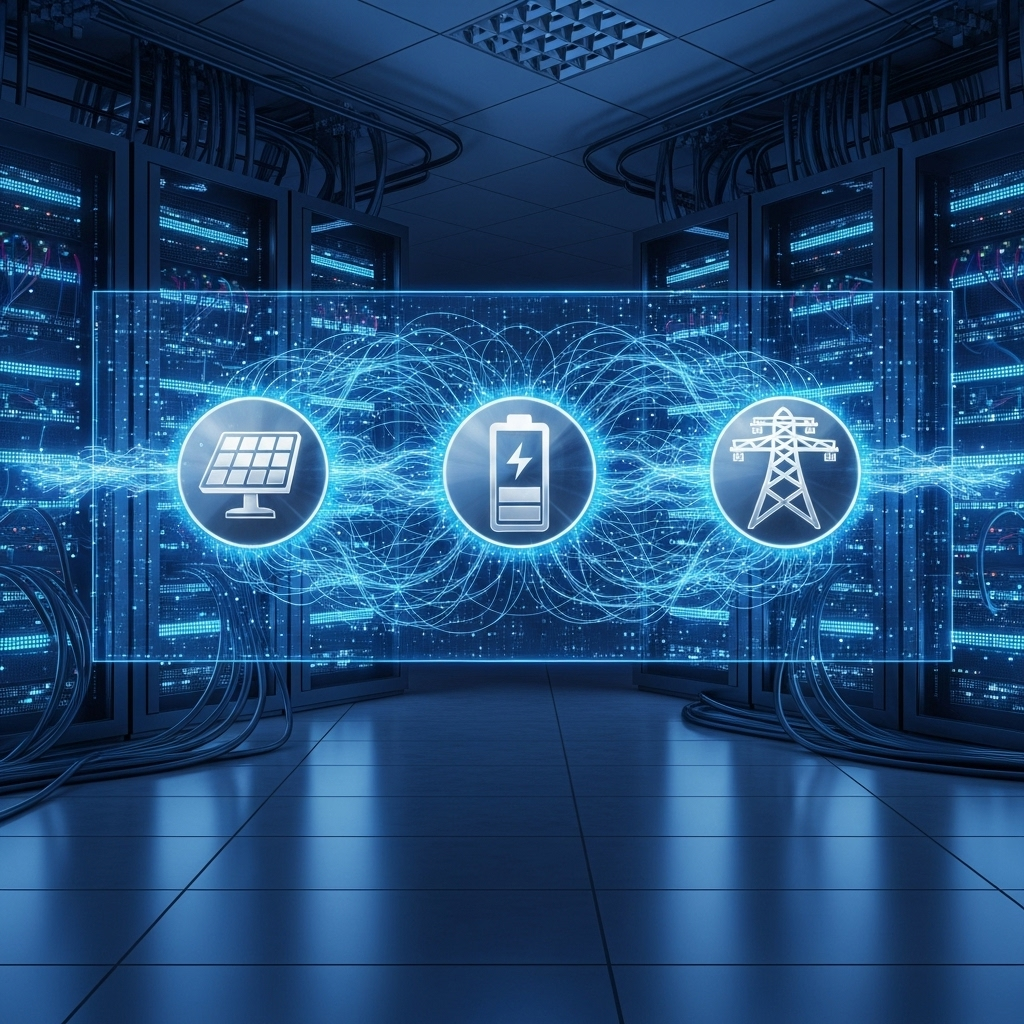The rapid expansion of Distributed Energy Resources (DERs) like solar panels and battery storage systems is reshaping our power grid. This growth introduces a significant operational challenge: data sprawl. As more devices and stakeholders connect to the network, controlling who can access sensitive information becomes increasingly complex. Without a structured approach, organizations face heightened security risks, potential privacy violations, and operational chaos. A clear governance strategy, built on defined roles and meticulous logging, is the solution to manage this complexity securely and efficiently.
The Growing Challenge of DER Data Sprawl
Data sprawl occurs when information is stored in multiple locations without centralized oversight. In the DER ecosystem, data from inverters, batteries, and smart meters flows to utilities, aggregators, service providers, and homeowners. This decentralized landscape, if not properly managed, creates significant vulnerabilities.
Cybersecurity and Privacy Vulnerabilities
Unchecked data access is a direct threat to grid stability and consumer privacy. When access controls are weak, unauthorized users could potentially manipulate DER operations, disrupting power flow or accessing sensitive customer information. Regulations governing data privacy place strict obligations on how personal energy data is handled, and non-compliance can result in severe penalties. Establishing clear procedures for secure data access is fundamental. As noted in the China Power System Transformation report, creating procedures for open and secure access to power system data is a critical opportunity for improving grid management.
Operational Inefficiency and Data Inaccuracy
Without a clear governance framework, tracking data becomes difficult. Different teams may work with outdated or inconsistent information, leading to errors in forecasting, maintenance, and billing. Redundant data storage and processing also increase operational costs. A centralized governance model ensures that everyone is working from a single source of truth, improving accuracy and efficiency across the board.
Building a Robust DER Access Governance Framework
A strong governance plan is proactive, not reactive. It starts with implementing the principle of least privilege and defining clear roles for every stakeholder interacting with the DER network.
The Principle of Least Privilege: A Core Concept
The principle of least privilege dictates that users and systems should only be granted access to the information and functions strictly necessary for their tasks. This approach minimizes the potential damage from a compromised account or an internal mistake. For instance, a field technician needs diagnostic data to service a battery system but does not require access to the homeowner's billing history or the aggregator’s entire asset portfolio. This limits the 'attack surface' of the system.
Defining Access Roles for DER Management
Role-Based Access Control (RBAC) is a practical way to implement the principle of least privilege. Instead of assigning permissions to individuals, you assign them to predefined roles. This simplifies administration and ensures consistency. When a person changes roles, their access rights are updated automatically.
| Role | Typical Permissions | Rationale |
|---|---|---|
| Homeowner | View real-time and historical energy production/consumption data for their own system. | Provides transparency and control over personal assets without exposing network-level data. |
| Field Technician | Access diagnostic data, run remote tests, and view maintenance history for specific assets. | Enables efficient servicing and troubleshooting without granting broad system control. |
| Utility Grid Operator | View aggregated DER performance data and send high-level control signals (e.g., curtailment). | Allows for grid stabilization and management while protecting individual customer privacy. |
| Data Analyst | Access anonymized, aggregated historical data for forecasting and system planning. | Facilitates research and improvement without exposing personally identifiable information. |
| DER Aggregator | Control dispatch signals for enrolled assets and access performance data for market participation. | Enables participation in grid services markets with the necessary level of control and visibility. |
The Critical Role of Logging and Monitoring
If roles define who can open doors, logs record every time a door is opened. Comprehensive logging is essential for security, accountability, and operational troubleshooting. It creates a detailed, auditable trail of all activities across the DER network.
Why Comprehensive Logging is Non-Negotiable
Effective logging is a cornerstone of any robust cybersecurity strategy. Logs provide the necessary visibility to detect suspicious activity, investigate security incidents, and verify compliance with policies. They are the primary source of information for forensic analysis after a breach and are often required by regulatory frameworks. The ability to record observable events on a system is a key cybersecure functionality that helps protect the grid from a variety of threats.
Key Data Points to Capture in Access Logs
To be effective, logs must capture specific, relevant information. A useful access log should include:
- User/System ID: Who or what initiated the action.
- Timestamp: The exact time the event occurred.
- Source IP Address: Where the request originated from.
- Action Performed: The type of operation (e.g., read, write, update, delete).
- Resource Accessed: The specific data or system component that was targeted.
- Status: Whether the action was successful or failed.
From Raw Logs to Actionable Intelligence
Collecting logs is only the first step. The true value comes from analyzing this data to identify patterns and anomalies. Security Information and Event Management (SIEM) systems can aggregate logs from various sources and use automated rules to flag potential threats in real time. For example, multiple failed login attempts from an unknown IP address could trigger an immediate alert, allowing security teams to investigate and block the threat before a breach occurs.
Putting Governance into Practice
A successful DER access governance policy combines technology, processes, and people. It requires the right tools, clear communication, and a commitment to continuous improvement.
Technology and Tools for Enforcement
Modern cybersecurity tools are essential for enforcing access policies. Using strong authentication methods, such as multi-factor authentication (MFA), ensures that users are who they claim to be. As recommended in guidelines for DER communication security, all data in transit should be protected using encryption protocols like Transport Layer Security (TLS) to prevent eavesdropping. Furthermore, managing the performance of these assets requires careful control. Access to settings that affect key metrics, such as the Depth of Discharge (DoD) in a battery, must be tightly restricted to prevent premature degradation. As explained in the ultimate reference on solar storage performance, proper management of these parameters is vital for system longevity and efficiency.
Audits and Continuous Improvement
A governance policy is not a static document. It must evolve to address new technologies, changing business needs, and emerging threats. Regular audits of access logs and user permissions are crucial. These reviews help identify and remove unnecessary permissions, ensuring the principle of least privilege is maintained over time. Periodic risk assessments can also highlight new vulnerabilities that need to be addressed in the policy.
Securing the Future of Decentralized Energy
Managing data sprawl is a critical task for the growing DER industry. By implementing a robust governance framework based on clearly defined roles and comprehensive logging, you can mitigate cybersecurity risks, ensure regulatory compliance, and improve operational efficiency. This structured approach does more than just protect data; it builds trust among all stakeholders and creates a resilient foundation for a secure, decentralized energy future.
Frequently Asked Questions
What is the first step to creating a DER access governance plan?
Start by identifying all stakeholders who need access to DER data and systems. Then, map out the specific data each stakeholder requires to perform their function. This forms the basis for defining roles and applying the principle of least privilege.
How does role-based access control (RBAC) differ from other access control models?
RBAC assigns permissions based on a user's role within an organization, which is simpler to manage at scale than assigning permissions to individual users. Other models, like Mandatory Access Control (MAC), are more rigid and often used in high-security environments, while Discretionary Access Control (DAC) allows data owners to set permissions, which can become chaotic in a complex ecosystem like DERs.
Are there specific standards for DER data logging?
While a single universal standard is still evolving, frameworks from organizations like the National Institute of Standards and Technology (NIST) provide comprehensive guidance. As part of a holistic approach, the NIST Cybersecurity Framework covers key functions like protection and detection. Core principles include logging all access events, protecting log integrity, and retaining logs for a sufficient period for forensic analysis and compliance audits.





Leave a comment
All comments are moderated before being published.
This site is protected by hCaptcha and the hCaptcha Privacy Policy and Terms of Service apply.